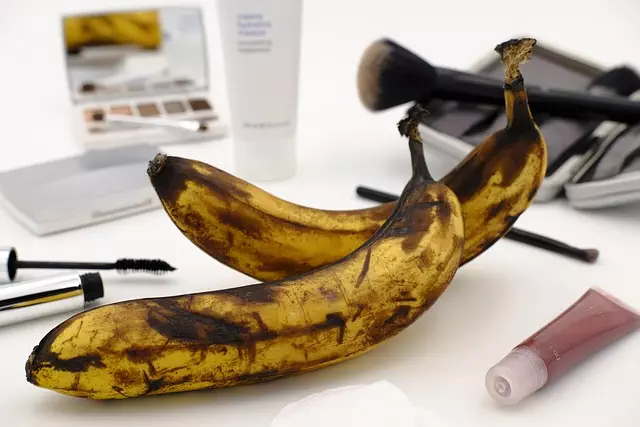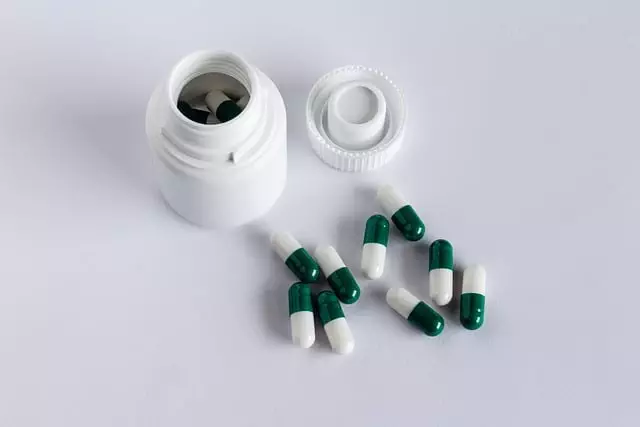Aging is influenced by genetics and environment, leading to cellular decline, reduced collagen production, molecular damage, and wrinkles. Anti-aging treatments focus on stimulating collagen, reducing inflammation, and addressing specific processes. Non-invasive options like radiofrequency, laser therapy, and microneedling target concerns without incisions. Lasers and advanced technologies enhance skin texture, tone, and elasticity with minimal downtime. Fillers and injectables provide immediate, long-lasting results for wrinkles and contour enhancement. Natural supplements and topical creams, rich in antioxidants and peptides, support collagen production and overall skin health. A healthy lifestyle, including diet and exercise, also fights aging. Future anti-aging treatments include personalized therapies, gene editing, stem cells, digital health, and epigenetic interventions.
“Uncover the secrets of staying young with our comprehensive guide to advanced anti-aging procedures. From understanding the science behind aging to exploring cutting-edge technologies, this article delves into various treatments for a youthful complexion. Discover non-invasive techniques, laser therapies, fillers, and even natural supplements effective in combating age-related concerns. Learn about dermatological surgeries as a last resort and adopt lifestyle modifications for optimal skin health. Explore future trends, from stem cell applications to innovative technologies revolutionizing the world of anti-aging treatments.”
Understanding the Science Behind Aging: Unraveling the Processes

Aging is a complex, multifaceted process influenced by both genetic and environmental factors. At a cellular level, it involves a decline in cellular function, reduced production of collagen and elastin—proteins crucial for skin elasticity—and an increase in molecular damage, including DNA mutations and protein aggregation. These changes lead to visible signs of aging, such as wrinkles, loss of skin firmness, and reduced skin hydration. Understanding these underlying processes is key to developing effective anti-aging treatments.
Scientific advancements have revealed that aging isn’t a uniform process across all cells and tissues. Some areas of the body age more rapidly than others, leading to disparities in physical appearance. This knowledge has paved the way for targeted anti-aging treatments. From stimulating collagen production to reducing inflammation, modern skincare incorporates innovative ingredients and technologies to address these specific aging processes, offering promising solutions for a more youthful, radiant complexion.
Non-Invasive Anti-Aging Techniques: A Gentle Approach to Youthful Skin

In the realm of anti-aging treatments, non-invasive techniques have emerged as a preferred and gentle approach to achieving youthful skin. These procedures offer a low-risk alternative to more aggressive options, focusing on stimulating the skin’s natural regeneration processes. By leveraging advanced technologies, such as radiofrequency, laser therapy, and microneedling, dermatologists can now target specific concerns like fine lines, wrinkles, and loss of skin elasticity without incisions or prolonged recovery times.
Non-invasive anti-aging treatments are tailored to suit various skin types and needs, ensuring a personalized approach to beauty. The benefits extend beyond immediate results, as these techniques often encourage healthier skin with improved collagen production and enhanced blood circulation. As a result, individuals can experience long-lasting effects, making them a popular choice for folks seeking subtle yet effective anti-aging solutions in the ever-evolving landscape of skincare.
The Power of Lasers: Targeted Treatments for Age-Related Concerns

In the realm of advanced anti-aging procedures, lasers have emerged as powerful tools for targeted treatments. These cutting-edge technologies offer precise and effective solutions to combat age-related concerns such as fine lines, wrinkles, and hyperpigmentation. By stimulating collagen production and breaking down unwanted debris, laser therapies can significantly enhance skin texture and tone, providing a youthful glow that outlasts traditional topical creams.
Today’s lasers are designed to address specific skin issues with remarkable accuracy, ensuring minimal downtime and maximum results. Whether it’s the intense pulsed light (IPL) for even skin tone or fractional lasers for tissue regeneration, these procedures offer safe and effective anti-aging treatments. As technology continues to advance, the power of lasers in the beauty industry is poised to grow, revolutionizing how we approach age-related skin changes.
Fillers and Injectables: Instant Results, Long-Lasting Impact

Fillers and injectables have emerged as popular anti-aging treatments, offering instant results with a long-lasting impact. These non-surgical procedures involve the injection of substances like hyaluronic acid or collagen stimulators into specific areas of the face to enhance its contour, reduce wrinkles, and improve skin texture. The immediate effects are noticeable, providing a smoother, plumper appearance that can last for several months.
The longevity of these treatments is a significant advantage, as they offer a more sustainable solution compared to temporary topical creams. With regular maintenance, patients can enjoy consistent results over time, ensuring they look and feel their best. This approach not only addresses visible signs of aging but also boosts confidence, making it a preferred choice for those seeking effective anti-aging solutions.
Dermatological Surgeries: When Is It Time to Consider More Radical Options?

When considering advanced anti-aging procedures, it’s essential to understand that dermatological surgeries should be approached with careful consideration and as a last resort. While non-invasive treatments like lasers, fillers, and topical creams offer effective ways to combat signs of aging, more radical surgical options are typically reserved for severe cases or specific concerns. Procedures such as face lifts, brow lifts, and neck lifts can dramatically improve the appearance of fine lines, wrinkles, and sagging skin.
However, these dermatological surgeries come with risks and recovery times. It’s crucial to consult with a qualified dermatologist who can assess your individual needs and goals. They can help determine if a more invasive approach is truly necessary, considering alternative non-surgical treatments or combining techniques for optimal anti-aging results without the associated risks of radical procedures.
Natural Supplements and Topical Creams: Boosting Your Anti-Aging Routine

In addition to professional procedures, incorporating natural supplements and topical creams into your skincare routine can significantly enhance anti-aging treatments. Many plants and herbs contain potent antioxidants that protect the skin from environmental damage, reduce inflammation, and promote collagen production. For instance, green tea extract, resveratrol from grapes, and ashwagandha are known for their anti-inflammatory properties and ability to slow down cellular aging.
Topical creams enriched with peptides, vitamin C, and retinol are also popular choices. Peptides can stimulate collagen synthesis, while vitamin C boosts skin brightness and reduces fine lines. Retinol, a derivative of vitamin A, exfoliates the skin, unclogs pores, and enhances the appearance of wrinkles. Combining these natural supplements and topical creams with your existing anti-aging treatments can provide a comprehensive approach to maintaining youthful-looking skin.
Lifestyle Modifications for Optimal Skin Health: Diet, Exercise, and Sun Protection

Adopting a healthy lifestyle is a powerful tool in the arsenal of anti-aging treatments. When it comes to achieving and maintaining optimal skin health, diet plays a significant role. A balanced diet rich in antioxidants, vitamins, and minerals supports collagen production, which is essential for keeping skin firm and supple. Foods like berries, leafy greens, and nuts are renowned for their anti-inflammatory properties and can help reduce the visible signs of aging.
Regular exercise is another cornerstone of skincare routines. Physical activity boosts blood circulation, ensuring oxygen and nutrient-rich blood reach all parts of the body, including the skin. This process helps eliminate toxins and promotes cell turnover. Additionally, exercise strengthens the immune system, contributing to overall skin health and a youthful glow. Protecting the skin from harmful UV rays is also paramount. Sun protection measures, such as wearing sunscreen daily and seeking shade during peak sunlight hours, are crucial steps in preventing premature aging caused by sun damage.
Advanced Technologies: From Prion Therapy to Stem Cell Applications

The world of anti-aging treatments has seen a remarkable evolution, driven by advancements in technology and our growing understanding of cellular regeneration. One such groundbreaking area is prion therapy, which leverages the body’s natural mechanisms to stimulate cell renewal. Prions, typically associated with certain diseases, have shown promising results in promoting skin health and elasticity when utilized therapeutically. This innovative approach targets specific proteins, offering a unique anti-aging solution.
Additionally, stem cell applications have revolutionized cosmetic medicine. Stem cells hold immense potential as they can be directed to become various types of specialized cells, including those found in the skin. By harnessing this power, anti-aging treatments can now address deep skin issues, enhance collagen production, and provide more lasting results. These advanced technologies represent a significant leap forward in the quest for effective and safe anti-aging procedures.
Future Trends in Anti-Aging Medicine: What to Expect Next

The future of anti-aging medicine promises exciting advancements, driven by ongoing research and technological innovations. One notable trend is the development of personalized anti-aging treatments tailored to an individual’s genetic makeup and lifestyle factors. These treatments could include targeted therapies, such as gene editing, to address specific aging-related pathways. Additionally, regenerative medicine approaches using stem cells and tissue engineering may become more prevalent, helping to restore and regenerate aged tissues.
Another area of focus is the integration of digital health technologies, such as wearable devices and AI-driven analytics, to monitor and optimize anti-aging regimens. These tools can provide real-time data on various health markers, enabling personalized adjustments to lifestyle, diet, and supplementation. Furthermore, the concept of “epigenetic aging” is gaining traction, leading to potential interventions that target age-related changes in gene expression without altering DNA sequences themselves. As we move forward, expect a more precise and holistic approach to anti-aging treatments, offering individuals greater control over their longevity and quality of life.
